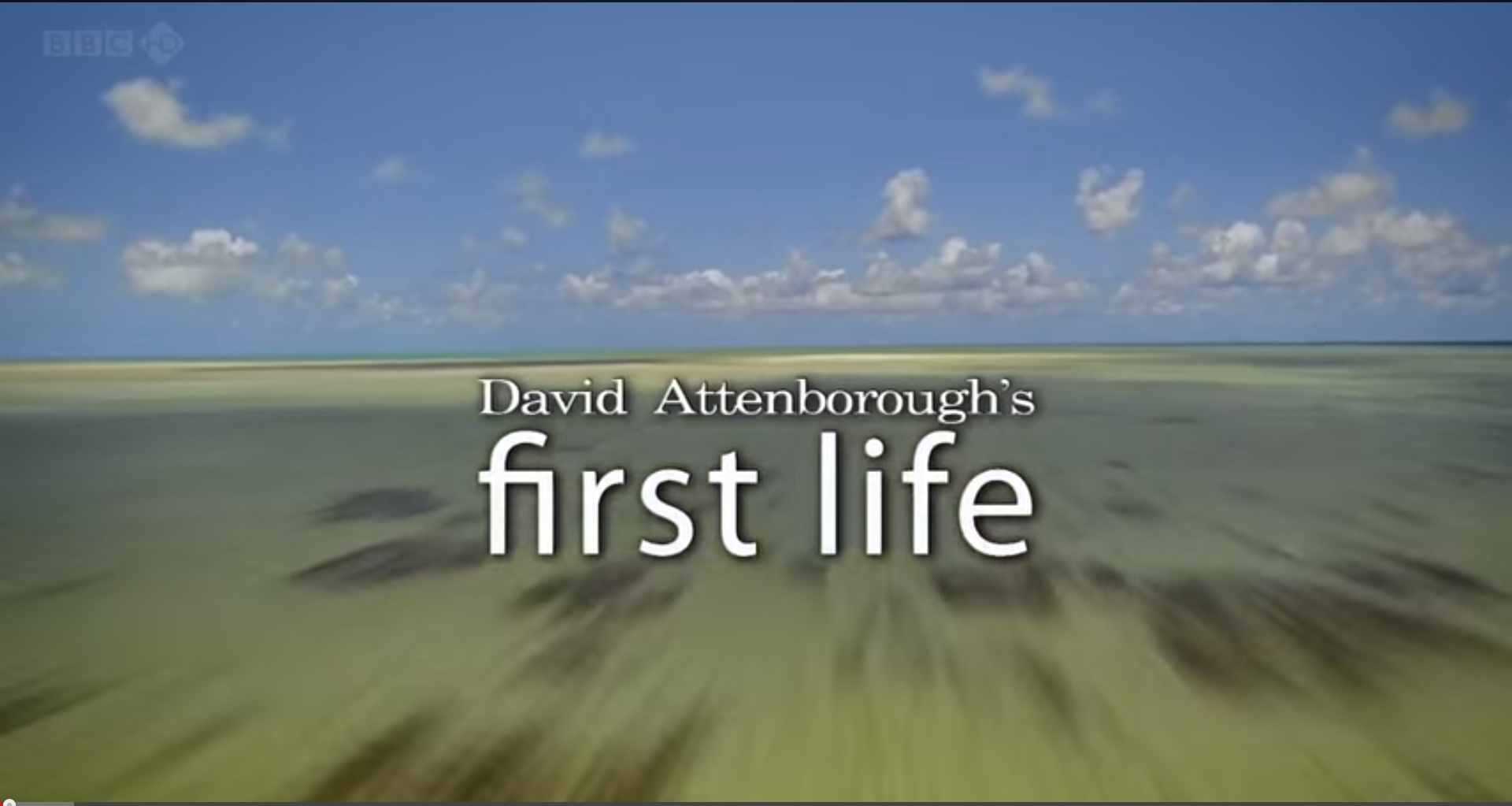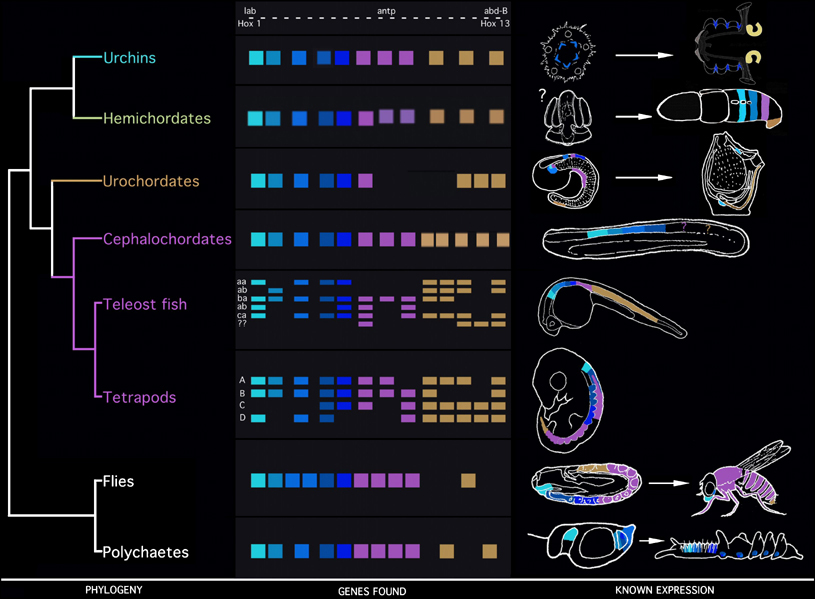It was a big curiosity for early geologists. For roughly 90% of the Earth’s history it appeared as if there was no life. After this long static period at about 542 million years from present life forms as we know of today began to appear bursting over a relatively short time (over 20 million years). Colloquially, this time period is called “Cambrian Explosion”. All of these life forms were of course aquatic: Annelids, arthropods, brachiopods, echinoderms, molluscs and ancestors of the vertebrates (but without backbones).
What was the prerequisite series of events that prepared the conditions for this explosion of diversity? Nobody had any solid understanding until 19th-century when accurate radio-isotopic dating of the rock formations became possible.
Thanks to radio-isotopic dating, now we know that there’s evidence for bacterial life as early as 3.5 billion years. The earliest signs of life goes back to 3.8 billion years. More advanced single-celled life forms which have membrane bound organelles called eukaryotes appeared about 2 billion years ago. Then, a little before 760m years ago, some of the eukaryotes began to evolve into multi-cellular forms like tiny sponges. Multi-cellularity evolved at least a dozen times independently in plants, algae, animals and fungi. Sponges are one of the most ubiquitous biological examples to demonstrate multi-cellularity in animals.
Things get more interesting when signs of more complex multi-cellular life forms appear 632m years ago during the Ediacaran. Ediacaran is a source of curiosity now because that is the time period when life began to prepare to “explode”.
One of the earliest fossil localities for the Ediacaran is the Daushantuo rock formations in China. The Ediacaran fauna become abundant from about 575m years ago. None had hard parts such a shells or teeth, so they did not preserve well. For this reason early fossil hunters missed them.
Appearance of shelled animals marks the beginning of the Cambrian Explosion 542 million years ago. These armored life forms are also called the small shelly fauna. Other spiny skinned forms followed shellies: Echinoderms (sea cucumbers, starfish and sea urchins) were there from 540m years ago. Brachiopods (lampshells) appeared 530m years ago. The trilobites, trademark fossils of the Cambrian date from 521 million years ago. Everybody suspected that shells and armors were causal. Perhaps the explosion was connected to evolution of hard body parts? Well, not really… A hard bodied Ediacaran fossil the Arkarua for example was an Echinoderm. Soft bodied life forms were also diversifying during the Ediacara right before the Cambrian Explosion. There must be something perhaps changing in the physical environment. That is also rather unlikely. The Great Oxygenation Event took place much earlier than Cambrian and Ediacaran periods. Series of massive glaciations (Snowball/Slushball Earth episodes) that led to freezing of even the equatorial regions which caused rock weathering and loading of minerals such as calcium and phosphorus into the oceans stopped right at the beginning of the Ediacaran period. Glaciations might have played a part in the evolution of Ediacaran animals, but then how do we explain the Cambrian explosion?
One possible explanation is based on the genes. Hox genes for example control body plans of the modern animal lineages. The Hox gene cluster is duplicated in vertebrates. There are eight Hox gene clusters in teleost fishes, showing an additional duplication from the four Hox gene clusters found in the tetrapod vertebrates. In contrast, the invertebrates (urchins, tunicates, flies and Polychaetes) each have a single cluster. Ascidians lack some of the middle Hox genes, and the cluster is broken up onto two chromosomes. Echinoderms and hemichordates share an independent duplication of the posterior genes, called Hox 11/13a, Hox 11/13b and Hox 11/13c (see the illustration above).
Likely a genetic leap caused the evolution of new germ layers at the beginning of the Cambrian. Sponges (Porifera) are masses of cells growing according to simple rules. Jellyfish and sea pens on the other hand are more organized. They are diploblasts, developed from structured embryos that have two cellular germ layers. These layers are called the endoderm and the ectoderm. Their adults have proper tissues (for example, nervous systems) and regular, radially symmetrical body shapes.
Then comes the triploblasts having a third germ layer, the mesoderm. Mesoderm is sandwiched between endoderm and ectoderm. More germ layers mean more tissue types and proper organs. Triploblasts are bilaterally symmetrical, at least when they are young. The triploblasts formed a big part of the explosion in the Cambrian.
Bilateral symmetry could be the “key innovation” leading to the Cambrian explosion. It is the prerequisite for head or formation of a “head” region. Sense organs and the nerves tend to position at the front. Bilateral animals thus began to evolve brains. Bilateral and triploblastic animals also evolved a digestive tract with two openings: a mouth and an anus. That conferred an advantage over the diploblastic animals who must regurgitate all the time. Their mouths are also their butts. Some Ediacaran fossils are also bilaterally symmetrical. Take Spriggina for instance.
We know very little about Ediacaran animals but at least by looking at similar life forms that are living with us today we can imagine their way of life. These examplary life forms are like the “living fossils” such as the Coelecanth or horseshoe crabs. A good representative for Ediacaran animals is the Trichoplax adhaerens a flat marine organism about half a millimetre across. Trichoplax is the only known member of a phylum called the Placozoa and seems little changed since the Ediacaran period. It has no gut, muscles or a nervous system but can still glide around using ciliary projections. A study published in PLOS One, provides an explanation for how they fed themselves and evolution of nervous system. In order to understand the Cambrian explosion, we must learn more about Ediacaran biota in more detail when first all five kingdoms of life were already established.




0 Comments
You can be the first one to leave a comment.